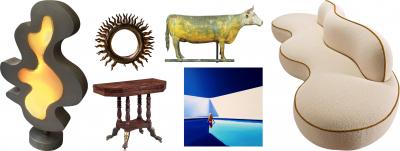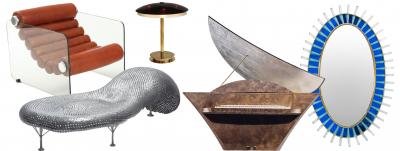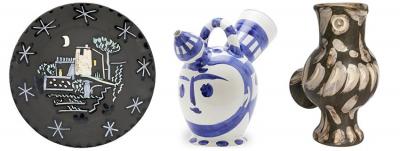Peales Museum Silhouettes
In the early decades of the twentieth century, fake silhouettes embossed with a stamp used at Charles Willson Peale’s (1741–1827) museums in Philadelphia and Baltimore over a century before were made in significant numbers.1 These fakes, often of important historical figures such as George and Martha Washington (Figs. 1 and 2) and Benjamin Franklin, are still found in many museums and private collections today.
Unlike oil portraits, which could take hours or days to complete, silhouettes were inexpensive likenesses that could be obtained in a matter of minutes. By 1802, in response to the popularity of silhouettes, which were invented in the late eighteenth century, Peale introduced the British inventor John Hawkins’s (1772–1855) physiognotrace at his museum in Philadelphia.2 While the operator traced the sitter’s head, the mechanism impressed the image onto a piece of paper that was often folded to produce multiple portraits. The operator then cut away the center of the paper, leaving a “hollow cut” image. These silhouettes, or profiles as they were also called, could be kept loose, framed, or compiled in albums; a black or blue piece of paper or fabric placed behind the image provided contrast.3
Peale initially employed Moses Williams to create the silhouettes; from the 1810s to the 1830s, a succession of other silhouettists worked at the museum, each in a slightly different style.4 Two different embossing stamps were used at Peale’s museums: one reads “Peale’s Museum” under a spread eagle (Fig. 3), the other reads “MUSEUM” (Fig. 4). A rarer embossed “PEALE” stamp is associated with the often itinerant work of Raphaelle Peale (1774– 1825), Charles Willson Peale’s eldest son. Not all silhouettes cut at Peale’s Museum, however, bear a stamp.
There have been attempts to distinguish the silhouettes cut at Peale’s Museum in Philadelphia from those made in Baltimore. Close examination of the silhouettes of residents from both cities suggests that the two stamps were used in both locations. The extensive business, social, and kinship ties between Baltimore and Philadelphia residents make determining whose silhouette was taken in which city very difficult. The limited records related to Peale’s Museum in New York City do not permit speculation about silhouette-cutting there.
How does one distinguish a real Peale’s Museum silhouette from a fake, particularly when the stamp that notes “Peale’s Museum” under an eagle was used again in the twentieth century? Fortunately there are several indications. First, the fake silhouettes are larger in size or proportion than the real ones. The real silhouettes done at Peale’s museums are rectangular and are usually cut from about 4 3/4-by-3 1/2 inch paper (see Figs. 3 and 4); the fakes in Figures 1 and 2 are 8 by 6 inches. Some fake silhouettes are smaller in overall size, but the sitter’s head is proportionately larger in relation to the paper than in the period silhouettes. Paper provides another clue: Peale’s Museum silhouettes tend to be cut from wove rag-based paper, often with the watermark of the Amies paper mill of Philadelphia. The fake silhouettes are cut from later wood pulp paper that is usually smoother, darker, and more brittle. The last hint is the sitter—the fake silhouettes generally are of famous figures such as the Washingtons, the Marquis de Lafayette, Benjamin Franklin, and other well-known historical personages.
Anne Verplanck is the Curator of Prints and Paintings at Winterthur Museum, Winterthur, Delaware. She served as guest curator for Auguste Edouart and the American Silhouette Tradition, an exhibition at the National Portrait Gallery from 1995 to 2000. She is editing, with Emma Lapsansky, Quaker Aesthetics: Reflections on a Quaker Ethic in American Design and Consumption, 1720–1920 (University of Pennsylvania Press, forthcoming, 2002).
Charles Willson Peale’s Museum, also known as the Philadelphia Museum, was an art, history, and natural history museum established in 1784 and sold to P.T. Barnum in 1849; its contents were sold in 1854. Peale’s son Rembrandt established Peale’s Baltimore Museum in Baltimore, Maryland in 1814, while another son, Rubens, founded Peale’s New-York Museum in New York City in 1825, both of which were also simply referred to as “Peale’s Museum.” Peale and his sons also established other museums. All of the museums closed in later years.
Hawkins’s physiognotrace was a new, patented version of the machine invented by Gilles-Louis Chretien in 1783–1784.
Ink or graphite details for hair and attire were not usually a feature of the Peale’s Museum silhouettes.
Silhouettists who worked after Williams continued to create bust-length images using the physiognotrace. No full-length silhouettes are associated with the output of Peale’s museums.















.jpg)
.jpg)












